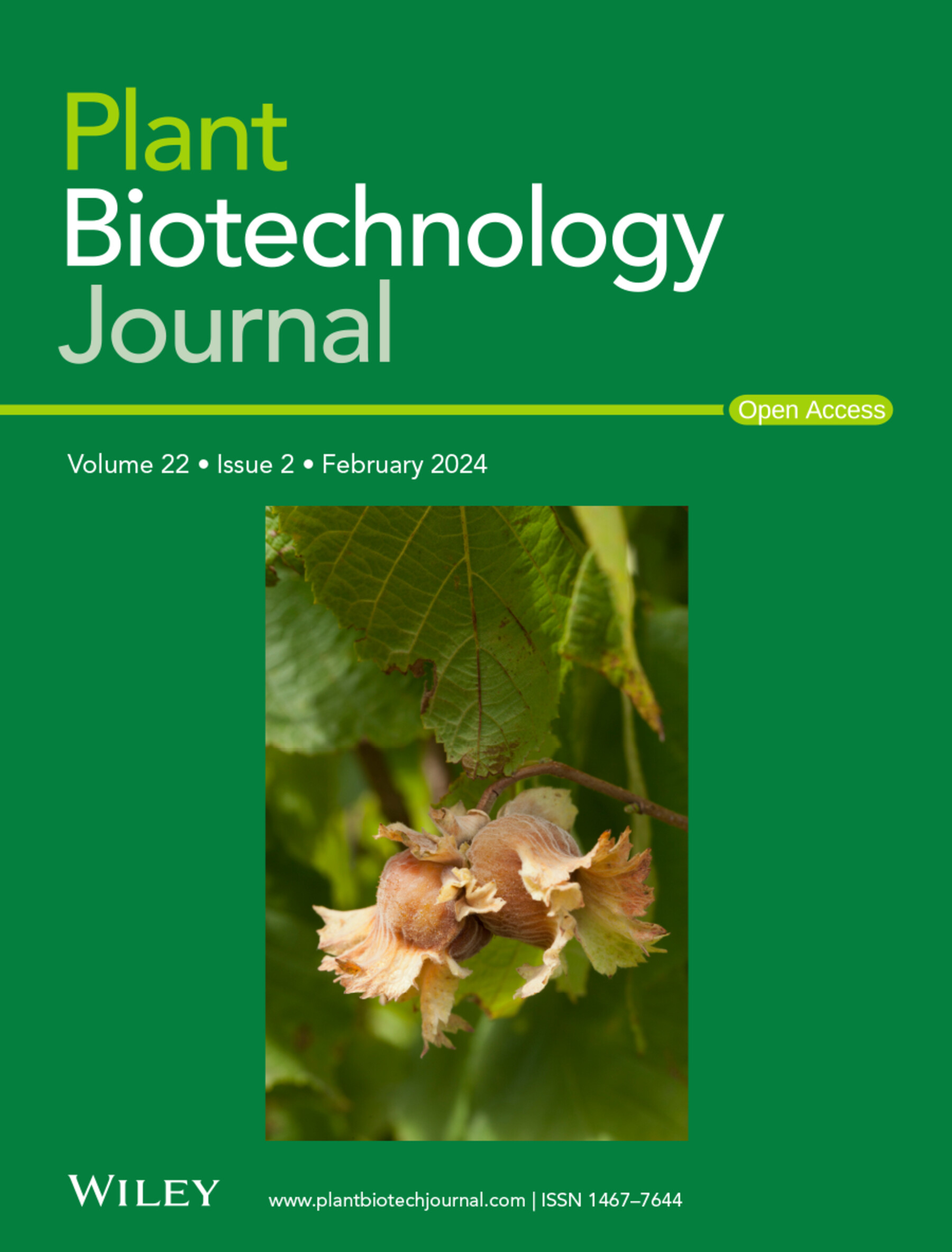通过将萜类代谢转化为虾青素,培育产量高、营养丰富、毒性降低的三重优势棉籽
IF 10.1
1区 生物学
Q1 BIOTECHNOLOGY & APPLIED MICROBIOLOGY
引用次数: 0
摘要
棉籽是一种宝贵的食用油和蛋白质来源,但由于棉酚含量高,限制了棉籽的利用。在本研究中,我们通过单基因(CrBKT)和多基因(CrBKT、ZmPSY1、PaCrtI、HpCrtZ)表达策略对棉花(Gossypium hirsutum)进行生物合成虾青素。转基因棉花在多个组织中表现出显著的虾青素积累,在叶片、茎、生殖器官和棉籽中观察到明显的红色色素沉着。虽然单个CrBKT表达足以将代谢通量转向虾青素的生物合成,但多基因转化并不一定导致更高的虾青素水平,这表明BKT是棉花虾青素积累的关键决定因素。此外,bkt过表达植株产生的棉籽更大,种子重量和大小增加,表明类胡萝卜素代谢与种子发育之间可能存在联系。重要的是,转基因棉籽中的棉酚含量显著降低,可能是由于萜烯代谢的重新分配。qRT-PCR分析证实,关键的棉酚生物合成基因表达下调,支持虾青素和棉酚生物合成之间的代谢权衡。这些结果表明,棉花可以作为虾青素生产的生物工厂,为传统来源提供了一种可扩展且具有成本效益的替代品。此外,增强营养和降低毒性的双重好处显著扩大了棉籽在人类食品、动物饲料和功能成分市场的潜在应用。本文章由计算机程序翻译,如有差异,请以英文原文为准。
Breeding triple-advantage cottonseed with higher yield, enhanced nutrition, and reduced toxicity by redirecting terpenoid metabolism to astaxanthin
Cottonseed is a valuable source of edible oil and protein, but its utilization is limited by high gossypol content. In this study, we engineered cotton (Gossypium hirsutum) to biosynthesize astaxanthin through both single-gene (CrBKT) and multi-gene (CrBKT, ZmPSY1, PaCrtI, HpCrtZ) expression strategies. Transgenic cotton plants exhibited significant astaxanthin accumulation across multiple tissues, with distinct red pigmentation observed in leaves, stems, reproductive organs, and cottonseeds. While single CrBKT expression was sufficient to redirect metabolic flux toward astaxanthin biosynthesis, multi-gene transformation did not necessarily lead to higher astaxanthin levels, suggesting that BKT is the key determinant of astaxanthin accumulation in cotton. Additionally, BKT-overexpressing plants produced larger cottonseeds, with increased seed weight and size, indicating a possible link between carotenoid metabolism and seed development. Importantly, gossypol content was significantly reduced in transgenic cottonseeds, likely due to the redistribution of terpene metabolism. The qRT-PCR analyses confirmed that the expression of key gossypol biosynthetic genes was downregulated, supporting a metabolic trade-off between astaxanthin and gossypol biosynthesis. These results demonstrate that cotton can serve as a biofactory for astaxanthin production, providing a scalable and cost-effective alternative to traditional sources. Furthermore, the dual benefits of enhanced nutrition and reduced toxicity significantly expand the potential applications of cottonseed in human food, animal feed, and functional ingredient markets.
求助全文
通过发布文献求助,成功后即可免费获取论文全文。
去求助
来源期刊

Plant Biotechnology Journal
生物-生物工程与应用微生物
CiteScore
20.50
自引率
2.90%
发文量
201
审稿时长
1 months
期刊介绍:
Plant Biotechnology Journal aspires to publish original research and insightful reviews of high impact, authored by prominent researchers in applied plant science. The journal places a special emphasis on molecular plant sciences and their practical applications through plant biotechnology. Our goal is to establish a platform for showcasing significant advances in the field, encompassing curiosity-driven studies with potential applications, strategic research in plant biotechnology, scientific analysis of crucial issues for the beneficial utilization of plant sciences, and assessments of the performance of plant biotechnology products in practical applications.
 求助内容:
求助内容: 应助结果提醒方式:
应助结果提醒方式:


